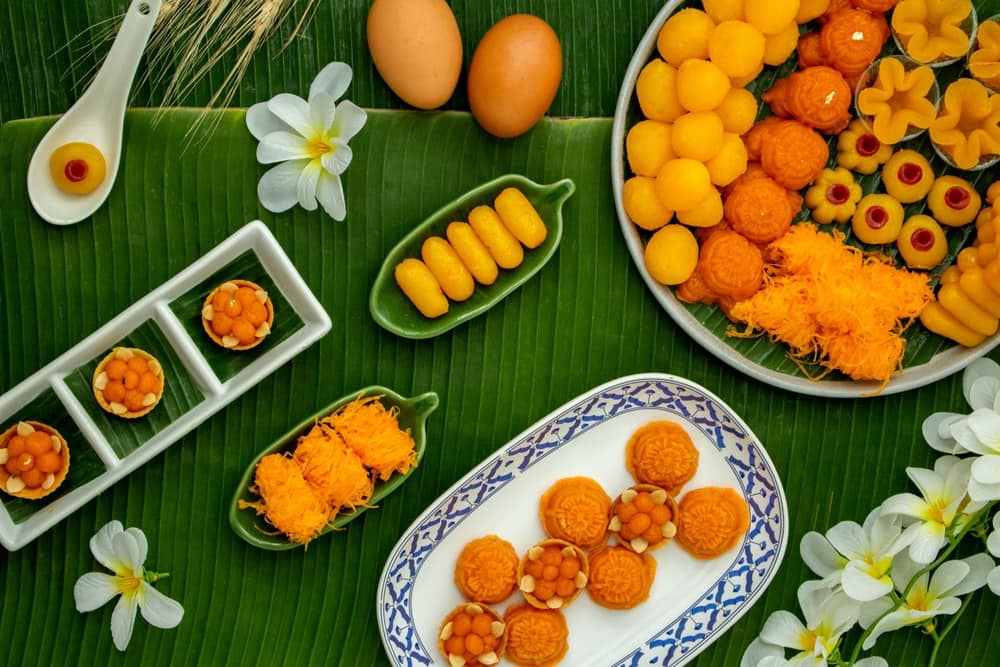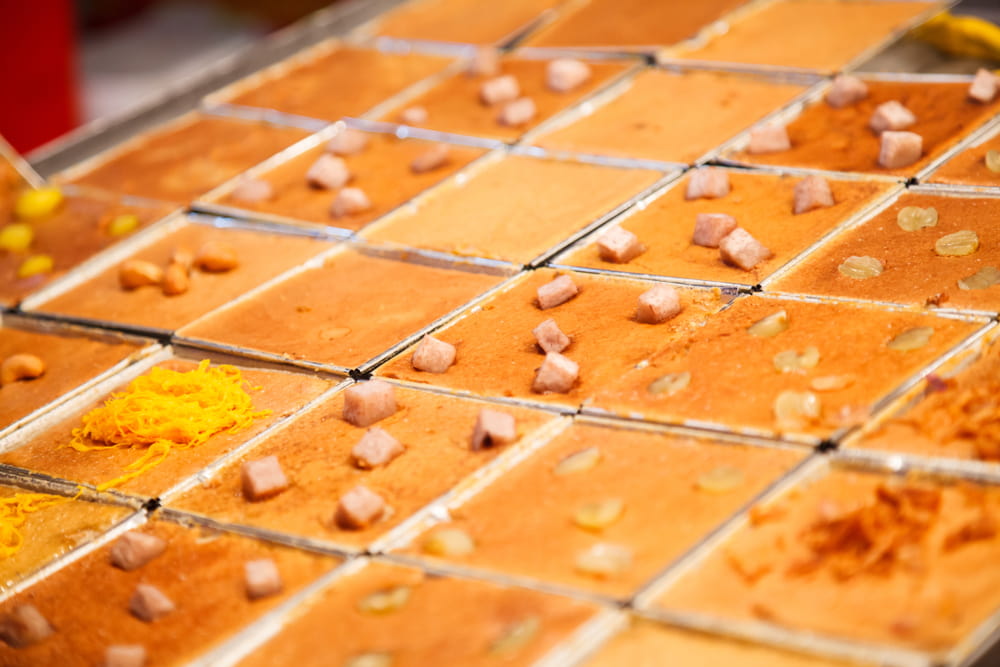
One thing that makes Thailand unparalleled in the world is its food, which includes not only savory dishes but also the sweet allure of Thai desserts. These desserts showcase the local wisdom of Thai craftsmanship, reflecting meticulous and careful preparation. When combined with natural ingredients, they create flavors that are both delicious and well-rounded, appealing to both locals and tourists alike.
For those wondering how many types of Thai desserts there are, this article will guide you through the different categories of Thai desserts and suggest a list of delectable treats that are a must-try!
How Many Types of Thai Desserts Are There?
Thai desserts can be categorized in several ways, but the most common method is by their cooking technique. Here are six prevalent types:
1. Stirred Thai Desserts
These desserts require stirring in a brass wok, moving from a liquid state to a thick consistency. Once smooth, the mixture is poured into molds or trays to set. Examples of this type include Tako, Kalamae, Kanom Piak Poon, candied fruits, Khao Neow Kaeo, and Khao Neow Daeng.
2. Steamed Thai Desserts
This type uses steam heat to cook the desserts, involving tools like steam baskets or molds, and sometimes wrapped in banana or coconut leaves. Examples include Kanom Gluay, Kanom Chan, Kanom Tan, Khao Tom Pad, and Kanom Tian.
3. Boiled Thai Desserts
These desserts are cooked by boiling ingredients in syrup until done. They are typically sweet and include Thong Yib, Thong Yod, Foi Thong, candied bananas, candied palm seeds, and other candied fruits.
4. Fried Thai Desserts
Fried desserts are cooked in oil until crispy, offering a pleasant snack experience. Examples include fried bananas, Khao Mao Tod, Kanom Nanglet, Kanom Fak Bua, Kanom Kong, and Kanom Khang.
5. Baked Thai Desserts
These desserts are cooked using heat to bake until done. This category also includes items that might not require an oven but are cooked on a stove to achieve a baked-like quality, such as Kanom Krok, Kanom Bueng, Kanom Maw Kaeng, and Thong Muan.
6. Boiled Thai Desserts
These involve cooking ingredients in boiling water or coconut milk, sometimes mixed with syrup, and occasionally thickened with flour to create soft desserts. Examples include Bua Loy, Lod Chong, Saku, and Kluay Buat Chi.

Famous Thai Desserts from 4 Regions You Must Try!
1. Northern Region
- Khao Kaeb: A type of fried Thai dessert made from thin, crispy rice flour or sticky rice flour pancakes, mixed with sugar and salt.
- Khao Vitu or Red Sticky Rice: A traditional Lanna dessert made by steaming sticky rice and then frying it with sugarcane juice. Once ready, it’s cut into pieces and sprinkled with white sesame seeds.
- Saku Sai Moo: These are round, chewy tapioca balls filled with cooked minced pork, commonly served with a dipping sauce.
2. Northeastern (Isaan) Region
Khao Tom Mad: A type of steamed Thai dessert made from sticky rice mixed with coconut milk, wrapped in banana leaves, and tied with string before being steamed.
- Khao Pong: A type of fried Thai dessert made from soaked sticky rice that is roasted, ground into a fine powder, dried in the sun, and then fried to puff up.
- Steamed Sticky Rice with Honey: This steamed dessert involves steaming sticky rice and dipping it in honey to eat.
3. Central Region
Thong Yib, Thong Yod, Foi Thong: These are classic Thai desserts made from egg yolks, coconut milk, sugar, and pandan leaves, often eaten together.
- Khao Neow Moon: A steamed dessert made from sticky rice mixed with coconut milk, salt, and sugar.
- Khao Tang Na Tang: A traditional crispy rice cracker from the central region, served with a sweet dipping sauce.
4. Southern Region
Kanom Ko or Tuepong Nao Nae: A traditional Southern Thai dessert resembling boiled sweets, coated in young coconut.
- Apong or Kanom Pajee: A native Phuket dessert similar to Tokyo sweets, available in both crispy and soft versions.
- Kanom La: Made from rice flour, these are thin sheets typically offered to monks during religious ceremonies.
Now that you’re familiar with the different types of Thai desserts and their regional varieties, if you’re looking for a premium cafe in Chidlom to try these, The Mercury Ville @ Chidlom offers a variety of restaurants and cafes that meet all your needs in terms of taste and quality of ingredients, along with impressive service. Conveniently located just steps from the BTS Chidlom, it’s the perfect spot for indulging in these unique and flavorful treats.



